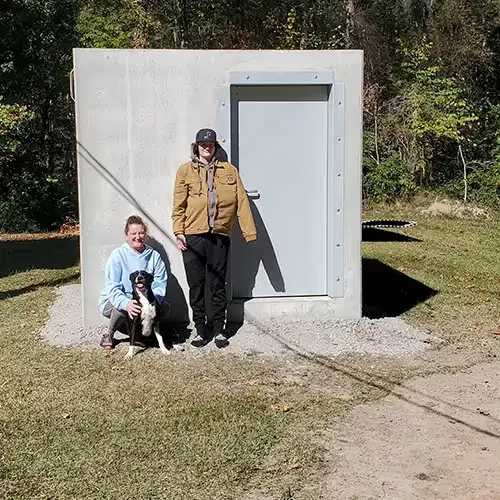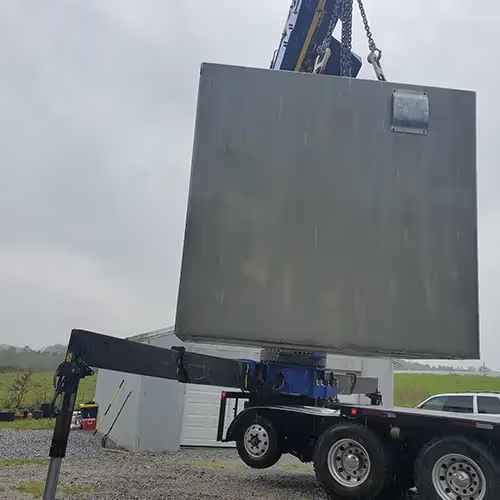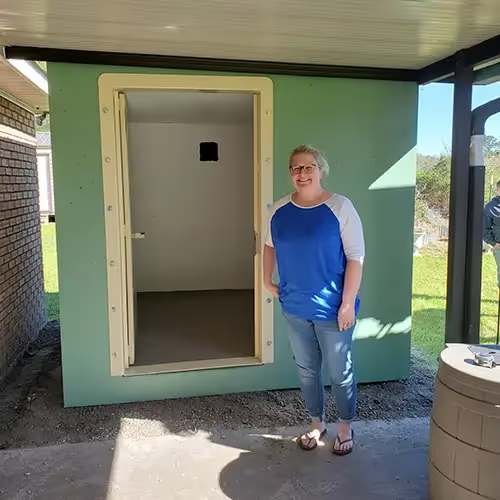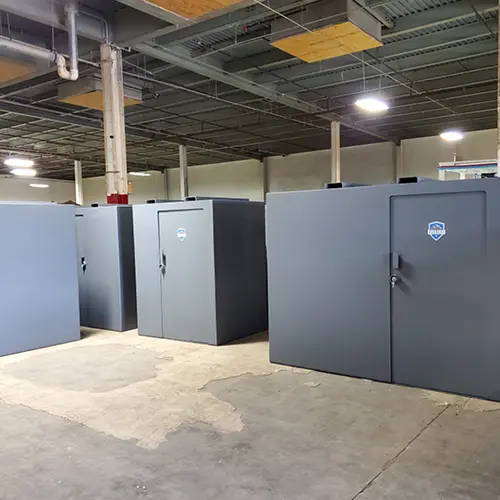Storm Cellar Requirements Every Homeowner Should Understand


Have you ever wondered if your home is truly ready to withstand severe weather? It’s easy to put Severe Weather Preparedness on the back burner until a tornado warning or sudden storm reminds you how quickly conditions can change. Severe storms can strike unexpectedly, and without a proper plan, your family could be at serious risk. That’s why having a storm cellar is more than a precaution—it’s an essential part of Home Storm Protection.
Think of a storm cellar as more than just a “shelter.” It’s a carefully designed space built following strict Storm Shelter Guidelines to protect you and your family. The right cellar not only provides safety but also offers peace of mind, knowing you are prepared for extreme weather events. However, not all cellars are equally effective. Understanding what features are required—such as proper ventilation, reinforced walls, and adequate size—can mean the difference between safety and vulnerability.
Knowing these requirements goes beyond simply installing a shelter; it’s about making informed decisions that align with Home Disaster Precautions. When you know how to evaluate your space and plan a secure structure, you avoid costly mistakes and ensure that your investment actually protects your loved ones. From Storm Cellar Design principles to Basement Safety Tips and Safe Room Installation, this guide equips homeowners with the knowledge to either enhance an existing cellar or create a new one that stands up to extreme weather and provides long-term security for the family.
The Evolution and Importance of Storm Cellars
Storm cellars have been a critical part of American home safety for generations, especially in tornado-prone regions. Early shelters were basic dugouts, offering a simple form of Underground Shelter Planning that provided families a safe space from high winds and flying debris. Over time, as storms became more severe and unpredictable, engineering and construction standards evolved. Today, modern storm cellars include reinforced walls, ventilation systems, and safety features designed to meet rigorous standards, including Stormproof Home Features and Concrete Storm Cellars.
A storm cellar is more than a basement—it’s a life-saving refuge. While the terms “storm shelter” and “safe room” are sometimes used interchangeably, there are important distinctions. Storm cellars are typically underground, whereas safe rooms can be above or below ground and are designed to meet Tornado Safe Room Standards, which include impact resistance and secure construction. These enhancements reflect the need for homes to adapt to more extreme weather conditions and demonstrate the importance of strategic Underground Room Design and layout.
In recent years, more homeowners are exploring Residential Shelter Options due to climate change and rising severe weather concerns. Incentives and programs exist to support Tornado Bunker Installation, making modern shelters more accessible. Contractors now offer designs that balance safety, comfort, and practicality, showing that a properly planned cellar is an investment in family protection, peace of mind, and Disaster-Ready Home preparedness. Understanding the evolution and modern importance of storm cellars sets the stage for knowing exactly what features and standards are necessary to safeguard your home. For guidance, check Reliable Storm Cellar Services.
Core Requirements That Make a Storm Cellar Safe
The safety of a storm cellar depends on several critical elements. Understanding these requirements ensures your structure provides maximum protection and long-term reliability. A secure cellar is not simply a hole in the ground—it is a Family Safety Bunker designed to withstand extreme weather while accommodating the needs of everyone in the household.
Key requirements include:
- Structural Strength & Basement Reinforcement – Materials such as reinforced concrete or steel must withstand flying debris and high winds during tornadoes or severe storms. Refer to Concrete Storm Cellars for material options.
- Proper Ventilation & Emergency Room Layout – Fresh air intake and exhaust vents are essential to maintain breathable air, particularly if occupants must stay inside for extended periods.
- Accessibility & Family Safety Bunker – Entrances should be easy to reach, featuring wide doors, non-slip stairs, ramps, and ADA-compliant options to accommodate all household members.
- Size and Capacity – Adequate space ensures everyone fits comfortably and that Emergency Shelter Supplies such as water, food, flashlights, and first aid kits are within reach.
- Compliance with FEMA and Shelter Building Codes – Following official guidelines guarantees your cellar is designed to survive real-world storm conditions, giving peace of mind that safety measures are effective. See Storm Cellar Safety Essentials for compliance tips.
When these elements are combined, you achieve a Disaster-Ready Home that goes beyond basic survival. Ventilation, reinforced walls, accessibility, and storage collectively create a secure, functional space. Each component plays a crucial role in ensuring not only physical safety but also comfort and reassurance, allowing families to remain calm and prepared during emergencies. This comprehensive approach highlights why attention to detail in Storm Cellar Design and Home Storm Protection is essential for every homeowner.
The Benefits of Meeting Storm Cellar Requirements
Meeting proper storm cellar standards provides both practical and emotional benefits. The right cellar isn’t just about surviving storms; it’s about creating a secure, functional space that enhances your home and protects your loved ones. Implementing Home Disaster Planning strategies ensures the family can act quickly and safely in emergencies.
Benefits include:
- Enhanced Safety & Home Protection Measures – Reduces the risk of injury or death during extreme weather events.
- Peace of Mind – Knowing that your Family Protection Plan is in place lowers stress and provides reassurance during storm warnings.
- Accessibility for Everyone – Modern designs ensure all family members, including seniors, children, and those with mobility challenges, can reach safety quickly.
- Home Value Boost & Home Safety Renovation – Compliance with FEMA standards can increase property value and make your home more appealing to buyers in storm-prone areas.
- Preparedness Beyond Storms – Shelters can also serve as secure spaces during earthquakes, home intrusions, or other emergencies.
For example, a family in Oklahoma upgraded to a Tornado Survival Shelter using detailed Storm Bunker Blueprints from DIY Storm Cellar Plans. They experienced enhanced safety during tornado season and saw an increase in their property’s resale value. Another homeowner incorporated accessible features, allowing an elderly parent to evacuate safely. These examples demonstrate how meeting storm cellar requirements can save lives, reduce stress, and create long-term home value. Implementing Storm Cellar Features and Severe Weather Equipment ensures a safe and practical investment that benefits the entire household.
Common Challenges of Storm Cellars (and How to Overcome Them)
While storm cellars are essential, they come with challenges. Recognizing these obstacles allows homeowners to plan effectively and implement solutions that reduce stress and cost. Common issues include:
- Underground Shelter Costs – Initial construction can be expensive, especially when using reinforced materials and hiring qualified contractors.
- Space and Location Limitations – Soil type, water tables, and property layout may complicate Underground Room Design or Basement Flood Protection.
- Maintenance Needs – Regular inspections of ventilation, structural integrity, and emergency lighting are required to maintain a functional space.
- Accessibility Concerns – Steep stairs or narrow entrances can limit access for seniors, children, or those with mobility challenges.
- Permit and Compliance Requirements – Navigating local building codes, Storm Safety Regulations, and FEMA standards can be complex.
Solutions include leveraging grants or rebates for Tornado Bunker Installation, consulting experienced contractors familiar with Safe Room Materials, and incorporating accessibility features such as ramps or automated doors. Commitment to maintenance and adherence to Shelter Construction Guide best practices ensures your cellar remains safe and functional. Even above-ground safe rooms can provide FEMA-compliant protection when space is limited. With proactive planning and the right resources, these obstacles can be overcome, resulting in a reliable Disaster-Ready Home designed to safeguard your family.
How to Put Storm Cellar Requirements into Action
To make a storm cellar effective, knowledge must translate into action. Practical steps help ensure your shelter meets safety, accessibility, and compliance standards.
- Evaluate Your Needs – Consider family size, property type, and potential weather risks to determine the best fit.
- Check Local Codes and FEMA Guidelines – Ensure compliance with Storm Safety Regulations.
- Choose Your Location – Decide whether an underground cellar, above-ground safe room, or hybrid design suits your property.
- Set a Budget – Include Underground Shelter Costs and explore financing programs or grants.
- Hire the Right Professionals – Ensure Safe Room Installation meets quality and safety standards.
- Plan for Accessibility and Comfort – Add ramps, lighting, ventilation, and organize your Home Storm Checklist.
- Commit to Regular Maintenance – Inspect annually to keep your storm cellar functional and secure.
Additional resources include FEMA guidelines, local emergency management offices, certified contractors, and printable Emergency Shelter Checklist guides. Following these steps allows homeowners to transition from planning to implementation confidently, ensuring their Family Safety Bunker is prepared for any emergency.
The Future of Storm Cellars: Trends and Innovations to Watch
Storm shelters are evolving with technological advancements, innovative materials, and design improvements. Modern Storm Cellar Features focus on functionality, comfort, and sustainability.
Key trends include:
- Smart Storm Cellars – Integrated sensors, alarms, and climate controls for real-time safety updates.
- Eco-Friendly Materials – Durable, sustainable construction reduces environmental impact.
- Modular and Prefabricated Designs – Simplifies Safe Room Installation and accommodates diverse property layouts.
- Enhanced Accessibility Features – Ramps, automated doors, and ergonomic interiors improve usability.
- Multi-Purpose Safe Rooms – Shelters can double as storage, utility spaces, or home offices when not in use.
These innovations benefit homeowners by offering safer, adaptable shelters that also enhance property value. Contractors and emergency management agencies gain opportunities to provide advanced solutions, while insurance providers may offer premium reductions for compliant shelters. Staying informed ensures that your Residential Safe Room Ideas are not only practical today but resilient and future-ready.
Bringing It All Together
A reliable storm cellar combines safety, preparedness, and innovation. Incorporating Basement Flood Protection, Home Disaster Planning, and Stormproof Construction ensures families have secure refuges during severe weather. Following Residential Safe Room Ideas and Storm Shelter Guidelines maximizes protection while adding long-term value to your home.
Small, incremental actions make a difference: stock Severe Weather Equipment, follow your Home Storm Checklist, and consult professionals for Safe Room Installation. Implementing these measures transforms a standard basement into a Disaster-Ready Home that protects loved ones, enhances property value, and provides lasting peace of mind.
Final Thoughts: Staying Prepared and Inspired
Storm cellars represent foresight, care, and commitment to safety. By integrating Underground Shelter Planning, Home Safety Renovation, and Home Disaster Precautions, homeowners create secure, functional shelters that protect against storms and other emergencies. A well-planned cellar is more than a safety feature—it’s a life-saving investment. Continually improving and maintaining your storm cellar ensures that your family remains safe, resilient, and prepared for the future.




